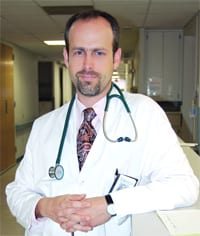Keeping Massachusetts an Innovation Leader
President Obama recently enunciated a grand new vision for the role of science by pledging to devote more than 3{06cf2b9696b159f874511d23dbc893eb1ac83014175ed30550cfff22781411e5} of the gross domestic product to research and development and to exceed the levels of investment last achieved at the height of the space race. In doing so, he rejected the argument that investment in science is a luxury to be discarded in difficult times.
Achieving the president’s goals — and expanding the local, regional, and national economies — will require greater, more innovative collaboration than ever before, particularly at this moment of economic and social uncertainty. It will also depend on active cooperation among scientists at research institutions like Harvard and UMass. Fortunately, universities throughout the state are already taking up that challenge.
For example, we recently launched the Commonwealth’s newest initiative to transform scientific research into economic vitality. The new Venture Development Center at UMass Boston will serve as a transfer station for exciting concepts born of collaborations between faculty and students, often at different institutions, enticing investment and incubating what might be the next ‘big idea.’ Simultaneously, this research and development facility will help train tomorrow’s innovators.
The center is a tangible example of the powerful ecosystem of renewal and discovery at the foundation of our regional success and international standing. It also symbolizes what we already know: Massachusetts is well-positioned to be a leading force in this new national vision for science, something that will benefit every citizen in the state.
Private higher education alone employs more than double the entire biotechnology sector in Massachusetts. There are 90,000 people in the Boston metropolitan area employed at private colleges and universities. When public institutions are added, that number swells to 104,000. That represents more employees than all the region’s computer hardware, software, and services business (81,000), or the banking, securities, and investment industries combined (86,000).
The power of those numbers explains why, despite the grim economy, the education and health services sectors have continued to be a stabilizing economic influence. In every recession of the past three decades, these sectors have made the downturn lighter and shorter than in other regions more dependent on automobiles or agriculture than on ideas.
We are in this enviable position because our institutions continually produce the fuel — the scientists, physicians, and engineers, the thinkers and ideas — that spur the new products, new jobs, and new companies that will help renew the economy and power the nation’s recovery. Our standing in this regard is evidenced by the fully 10{06cf2b9696b159f874511d23dbc893eb1ac83014175ed30550cfff22781411e5} of all National Institutes of Health biomedical research funding awarded to researchers in Massachusetts. Think about that: one in every 10 dollars that leaves Washington to fund scientific discovery arrives here, into this single state.
As the region’s institutions of higher learning tackle the nation’s biggest challenges, they simultaneously guarantee the region’s primacy in the global economy. There are already hundreds of collaborative projects in the pipeline. For instance, with $10 million in funding from the Massachusetts Life Sciences Initiative, researchers from Dana-Farber Cancer Institute, UMass Boston, and Harvard Medical School are developing a center for personalized cancer therapy that will be housed in the new Venture Development Center.
In another example of building on the strengths of the Commonwealth’s leading research universities, we are working with MIT to explore the potential of developing a world-class, green, high-performance computing center for the research community of Massachusetts. Although MIT President Hockfield and her team developed the initial idea, they had the vision to involve other research universities, state officials, and industry leaders in a project that could be much larger and more ambitious than any of us could manage alone.
If our institutions are to continue to benefit mankind, we must continually explore and develop the types of collaborations that a green computing center would represent.
Our greatest strength lies in the collaborations that create our ‘idea factories.’ We share our findings broadly in order that others can build on our work and we translate the products of these efforts so that the public can benefit.
By collaborating to pursue new knowledge and train the next generation of inventors, institutions like Harvard and UMass will drive the scientific and business innovation that will lead Massachusetts to a bright economic future.
Drew Gilpin Faust is president of Harvard University. Jack M. Wilson is president of the University of Massachusetts. This article first appeared in the Boston Globe.

